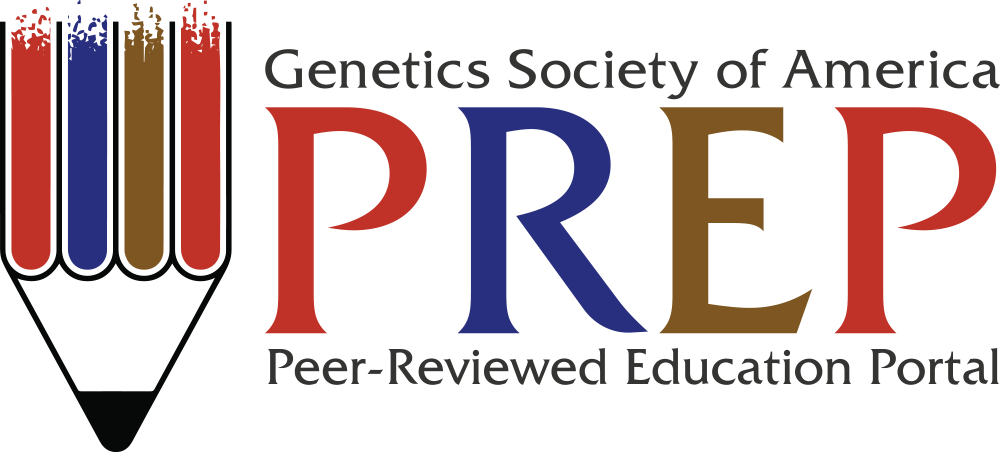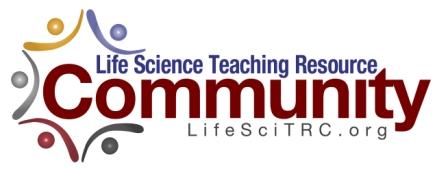|

Instructions for Authors and Reviewers
The Genetics Society of America is now
accepting submissions of educational
resources for peer-review! If you
have an original resource that you would
like to submit, please follow the
instructions for authors below, paying
particular attention to the
rubrics reviewers will use to assess
your submission. Please also
include a
Resource Justification along
with the other materials for your
submission.
We are currently accepting
In-Class/Lecture Exercises,
Laboratory Exercises,
Laboratory Protocols, and
Images/Animations. Please also
feel free to submit sample course
syllabi, which will not be subject
to peer-review. We also accept
whole lab or lecture courses; for
review procedure, see below.

GSA PREP is thrilled to be a
partner with the Life
Science Teaching Resource Community
(LifeSciTRC), an online community with
600 registered users and a library of
more than 6,700 peer-reviewed teaching
resources for life science educators at
all levels. All original resources
published in GSA PREP will be deposited
in this library, and will join life
science resources from eight other
professional societies.
If you would like to suggest excellent
educational resources already
available on other websites, please
contact
Beth Ruedi directly with your
suggestion.
For Reviewers:
Please use the following rubric to
assess the resource you have been asked
to review. Please fill out the
rubric online and any additional
material that you think would be
relevant to your review within two weeks
of receiving the resource you are
reviewing.
 Peer-Review
Evaluation Rubric Peer-Review
Evaluation Rubric
 Peer-Review
Evaluation Rubric for Full Courses Peer-Review
Evaluation Rubric for Full Courses
Instructions For Authors:
Core Concepts and Competencies:
The lecture and laboratory exercises
should help students develop core
competencies while covering necessary
genetics concepts.
Please use these concepts and
competencies as a guideline for what we
are looking for. Resources
should promote development of at least
one core competency while demonstrating
at least one core concept.
Ideally, resources will cover several
competencies and one or two core
concepts.
Resource
Justification:
Each published resource should have a
document providing a description of the
method and the concepts and competencies
covered. This will be included
along with any instructions for faculty,
TAs, and students as well as any other
supplemental material necessary to make
the resource complete. The
document should cover the following:
Synopsis (paragraph with a short description
of the resource and its intended use)
Introduction (What's the reason for this
resource? Why is unique or different from other resources?)
Approach/Method (Instructor's guidelines
for how to do the exercise)
Justification (How does this resource
improve the core competencies that students should be
learning?)
Sample/Example (if necessary)
How to Submit:
Please fill out the online submission
form for your resource. Please also
see the rubric in the Reviewer section
to note what criteria your peers will
use to review your resource.
Peer-review Process:
Submissions
selected to proceed to review will be sent to two peer-reviewers
with an expected time to decision of 3-4 weeks. If the two
initial reviews are contrary, the resource will be sent to a
third reviewer.
Full courses are now also being accepted!
Lab courses will be reviewed by treating each laboratory unit as
a separate entity sent out to two reviewers; one additional
reviewer will assess the big picture of the course as a whole.
Lecture courses will be sent to two reviewers who will assess
the big picture as well as providing a more detailed review of
two resources of their choosing from the course.
Use in Other Portals:

Resources
accepted to GSA PREP will also be deposited the
Life Science Teaching Resource Community (Life Sci TRC)
library, which in turn deposits the resource in
BEN and NSDL.
GSA is a new partner in LifeSciTRC, and this partnership will
result in a much wider audience for our resources.
In
addition, authors may choose to submit their resource to
HHMI's CourseSource, and it will be cross-posted in GSA
PREP. Some resources published in GSA PREP that are
appropriate for CourseSource will be chosen to cross-post on the
CourseSource site as well.
In all
cases, the resource is clearly marked as a GSA PREP resource and
proper credit is given to the resource authors.
Copyright:

All original resources published on GSA PREP are licensed under a Creative Commons Attribution-NonCommercial-ShareAlike 4.0 International License.
Authors can choose to withdraw their resource from GSA PREP in
order to publish educational research conducted using said
resource; we'd recommend publication in
CBE-Life Sciences
Education.
Citations and Digital
Object Identifiers:
GSA PREP is
committed to publishing top-quality, useful resources in
genetics education. We're also committed to promoting and
disseminating your work, so it receives the most usage in the
classroom.
To that end, we have secured a Digital Object
Identifier (DOI) for these resources. The DOI prefix is
associated with GSA and used with our journals, GENETICS
and G3: Genes|Genomes|Genetics.
Resource citation format follows most article
citations. An example of a GSA PREP citation is:
Noor, J. K. F. and Noor, M. A. F.
(2013). Finding Selection in All the
Right Places: A College Genetics
Laboratory Inquiry-Based Learning
Exercise. Genetics Society of America
Peer-Reviewed Education Portal (GSA
PREP): 2013.001;
doi: 10.1534/gsaprep.2013.001
|